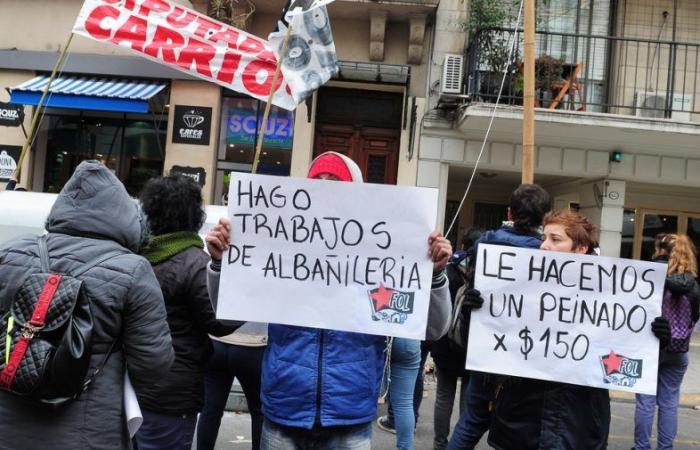In the first 3 months of Javier Milei’s management, there were the greatest inequality of the distribution of income from the new series started by INDEC in 2016. And a jump out of poverty which would have reached 55% for the January-March period.
The increase in unemployment and the fall in the employed population were accompanied by the decrease in income in relation to the inflationary spike, with particular force among lower-income families and households.
INDEC data for the first quarter of this year show that the 10% of the highest-income population It went from monopolizing 35.4% of the “cake” versus 33.8% a year ago and 31.9% in the same period of 2022. 10% of the population with the greatest resources had income 23 times higher to the poorest 10%, when in the first quarter of 2023 that gap had been 19 times
On the other hand, 40% of the lowest-income sectors fell another step from 14.4% to 13.4%. Thus, in proportion to total income, new sectors joined the poverty line, especially those from the salaried and professional middle class.
From the Report it is clear or implied, according to the specialist Leopoldo Tornarolli (Master in Economics at the UNLP and professor of Economic Policy at the UNLP) “a poverty rate of around 55% in January-March. If this is correct, poverty in the first semester will be well above 50%.” If projected over a total population of 47 million, more than 23 million would be living in poor households.
All these numbers are reflected in the Gini coefficient of family per capita income in the INDEC “Income Distribution” Report where it states that “the Gini quotient of people’s family per capita income was 0.467 for the first quarter of 2024, while in the same quarter of 2023 The value was 0.446, which shows a significant increase in inequality in the year-on-year comparison.”
The Gini coefficient is an indicator of inequality in income distribution. It takes values between 0 and 1. The closer to 1, the greater the inequality in the distribution of income and the opposite when it approaches zero (absolute equality).
This increase in inequality occurred despite the fact that in households the weight of non-labour income (such as state aid) was greater for the lowest deciles of total family income (62.6%) and in the highest 13.6% (mainly financial income). With cuts in social aid plus the increase in unemploymentincome from social aid would have decreased in the second quarter, another factor driving poverty.
For its part, there was also a jump in the gap between men’s income from 24.2% to 27.2% in relation to women’s income.
Meanwhile, the salaried population was reduced but those who work without retirement discounts remained at 35.7%, of which 25.8 points correspond to lower-income workers.






